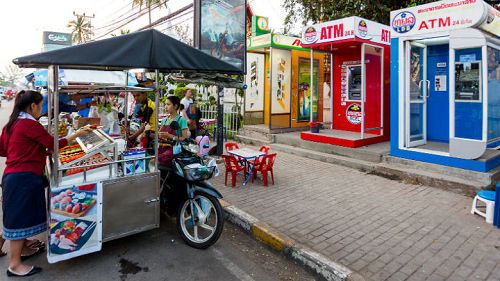Lao PDR's Reforms Can Strengthen and Sustain Inclusive Growth
The Lao PDR economy is projected to expand at around 7 percent annually for the period 2017 to 2019, higher than other countries in the region, according to the latest edition of the World Bank’s Lao Economic Monitor, released on May 24th.

The country’s growth has moderated from historical averages and is driven by a pipeline of power projects and recovery in the agriculture and manufacturing sectors, as well as new opportunities prompted by closer regional integration.
According to the report, inflation pressures remain low, while credit growth has stabilized over the past year. Expansion of the power sector is expected to increase power exports, while non-resource sectors such as tourism, trade and financial services are expected to benefit from closer regional integration and improved connectivity.
The country can adopt reforms that will help sustain high growth and address some potential risks. Exports and investment inflows may be impacted by economic and policy uncertainty in the region. The widening of the deficit to around 6.2 percent of GDP in 2016 pushed up public debt to an estimated 68 percent of GDP. Improved revenue collection and efficiency in spending, as well as adjustments in monetary and exchange rate policies, complemented by strengthening the oversight capacity of the Bank of Lao PDR, would help in maintaining stability.
"Lao PDR has maintained strong economic growth, which is a significant achievement,” said World Bank Country Manager for Lao PDR, Sally Burningham. “Reforms to improve tax administration and the efficiency of public spending can strengthen and sustain this growth – and that would translate into better health-care, education, quality of life, and opportunities for families and communities across the country.”
Although Lao PDR has achieved strong economic development over the past decade, higher investment in human development, particularly health services, is a priority. High out of pocket spending deters the poor from using health services, which increases their vulnerability. Rates of maternal and child mortality in Lao PDR remain high.
An increase in government spending on health services, combined with measures to enhance the efficiency and effectiveness of this spending, will be critical for the country’s efforts to attain universal health coverage by the year 2025 and improve health outcomes across the population.
“We support the recent increase in the country’s health budget, and encourage more to be done, as overall public sector spending on health care remains low, with average expenditure per capita among the lowest in the region. The government’s efforts to improve health-care services would brighten the future opportunities of this generation and the next,” said Burningham.
Source: World Bank
- 315 reads
Human Rights
Ringing FOWPAL’s Peace Bell for the World:Nobel Peace Prize Laureates’ Visions and Actions

Protecting the World’s Cultural Diversity for a Sustainable Future

The Peace Bell Resonates at the 27th Eurasian Economic Summit

Declaration of World Day of the Power of Hope Endorsed by People in 158 Nations

Puppet Show I International Friendship Day 2020

